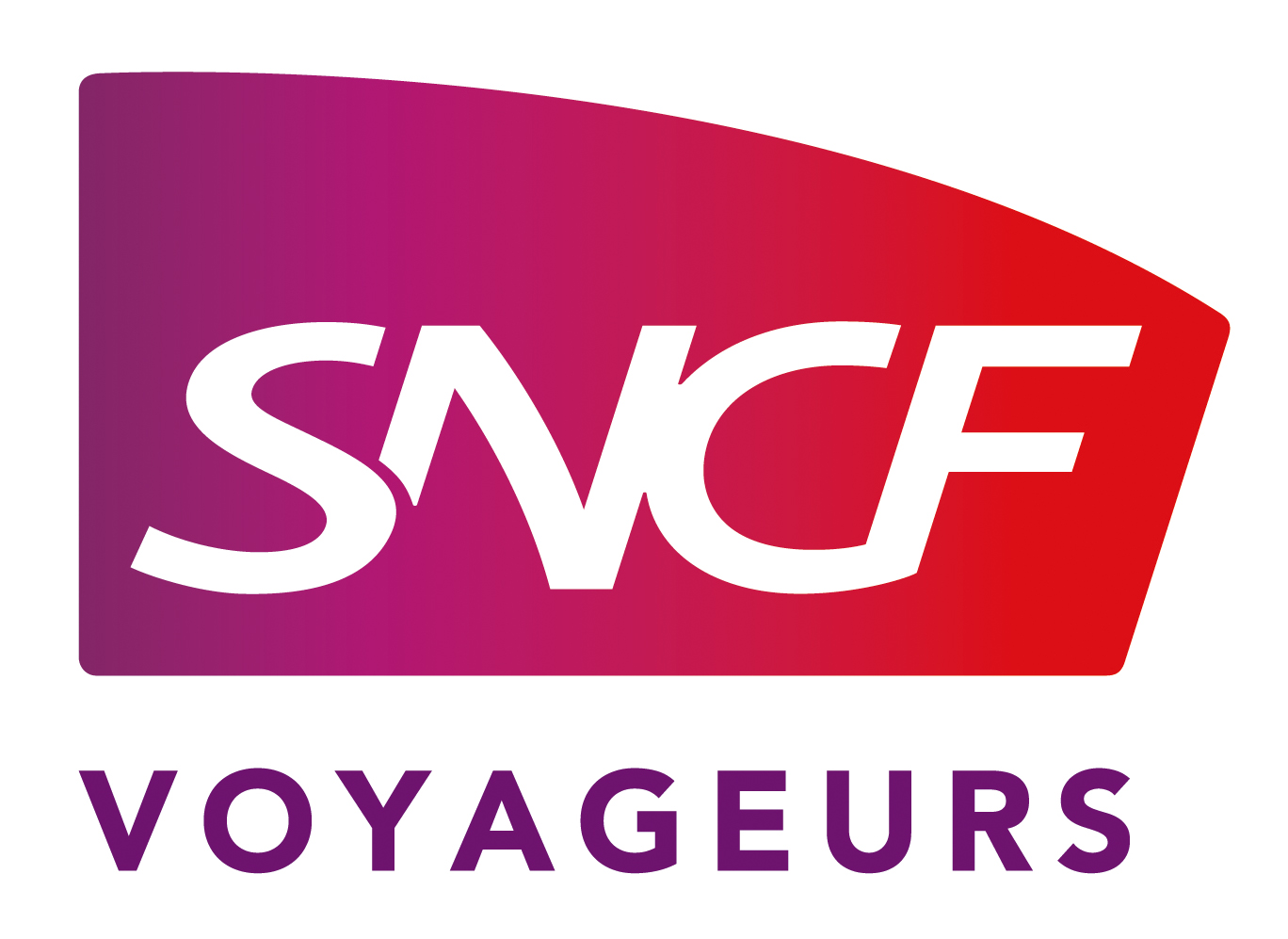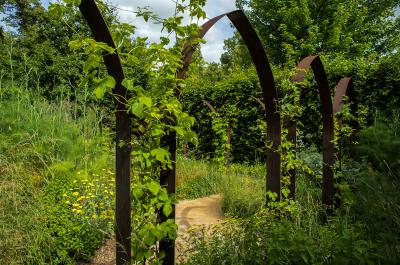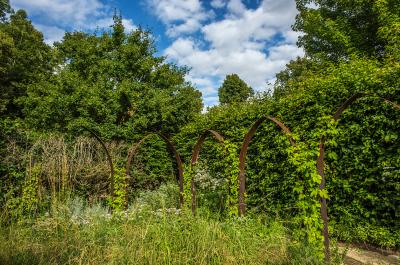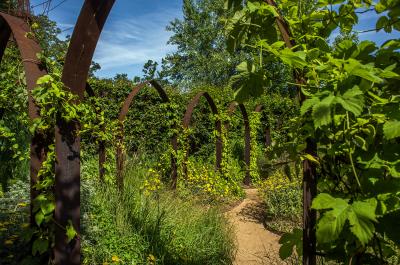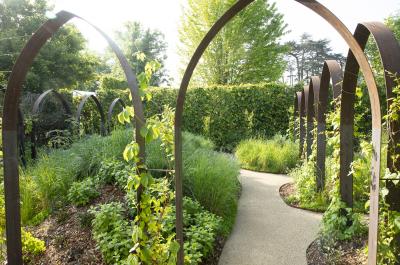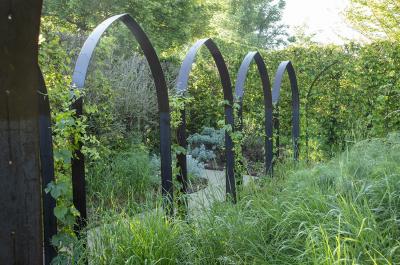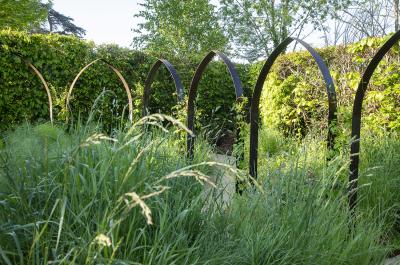24. Le jardin de Thélème
Awarded on the 22nd of June 2022 by a jury of professionals renowned in the world of garden art
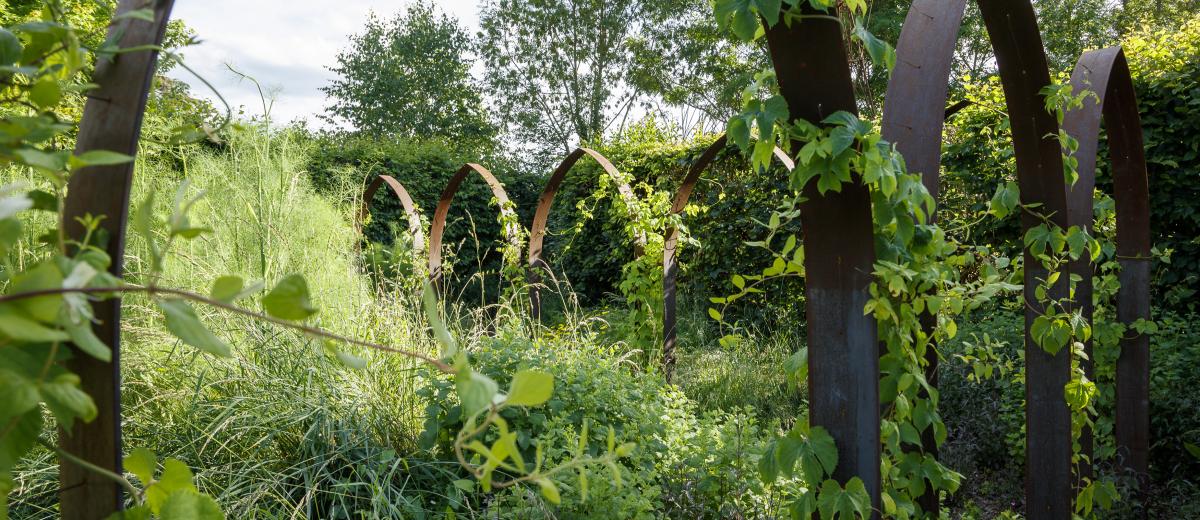
DESIGNERS

François Massin Castan is a French architect with a degree from Lille National Higher School of Architecture and Landscape and authorisation to exercise project management under his own name from the Nantes National Higher School of Architecture. He set up his own architectural practice in 2017 after working on a range of collective professional projects. In 2019, building on his past experience, he founded the Atelier du Ralliement, a physical space for shared thought and action located in Place du Ralliement in Nantes. Through the Atelier du Ralliement, François Massin Castan has established a territorial architectural practice based on the wide range of scales he tackles, navigating his way between everything from ephemeral scenographies and installations to development of urban and landscaping strategies, by way of contemporary architectural transformations bearing essentially on existing built heritage. Development of intervention methodologies suited to their contexts, sharing of knowledge between players in joint projects, and experimental research on implementations and procedures rooted in reality are central to this highly sensitive collaborative approach. François Massin Castan was a prize winner at the Europan 14 “Productive Cities” competition in 2017, and winner of the 2019 “Territorial Dynamics in Question” residency in Normandy, run by the Réseau National des Maisons de l’Architecture.
After spending his childhood and teenage years in Touraine on the banks of the Loire, Edouard Moulin moved to Nantes to study at the city’s National Higher School of Architecture. His love of Loire Valley landscapes developed further there with his discovery of the river’s estuary, an area part industrial part wild. In the context of a university course, he spent a study year in Belfast. The geopolitical situation and its geographical expression led him to write an essay on walking. In that city fractured by walls, you often had to take roundabout ways and wandering became a study protocol. Walking is a core activity that supports such other of his passions as photography and literature. He takes part in photography exhibitions, experimenting to find out how far you can go in enlarging standard film format. The largest formats he has exhibited so far measure 1 metre x 1.5 metres. His photos highlight the aberrant beauty of humankind’s transformations of their environment. Now working as an architect in a Nantes agency, he is committed to making good use of his free time by experimenting in a variety of fields. He founded a microbrewery in Nantes in 2018, in partnership with François Massin Castan, and continues with his photographic work.
Lucien Gurbert is an illustrator who lives and works in Brussels. A graduate of Amiens’ School of Art & Design, with a State Diploma from the Nantes School of Architecture obtained in 2017, he started self-publishing his early stories in 2015, first of all with the Radio as Paper collective and then in the Bento magazine from 2018 onwards. He illustrates regularly for architecture studios and the press, including in Revue Pli, Zola, Le Monde and Robert Laffont. His stories and images are rooted in the concrete reality of our contemporary world, torn between beauty and absurdity, and take an often surrealistic approach, seeking to conjure the fantastical out of the trivial. The environment shaped by humankind, waste and dreams are recurrent themes in his work. As an architect, he worked on modern and medieval heritage rehabilitation projects as well as urban planning projects in the Loire Estuary region. As a university student, he wrote a thesis on security trends in western urban planning. In 2013, he took part in the Art Chemin Faisant collective exhibition in Pont-Scorff, contributing a visual and sound work. In 2021, he won the Art dans les Cités residency organised by Saint-Malo’s Comic Strip Festival, at which he exhibited his work.
